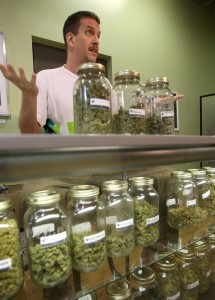 Finding good a Budtender is a problem for both large and small dispensaries, both are frequently heard talking about how hard it is to find “good” people. The number one skill for a Budtender to have is patient service skills and being able to connect will build relationships with patients.
Finding good a Budtender is a problem for both large and small dispensaries, both are frequently heard talking about how hard it is to find “good” people. The number one skill for a Budtender to have is patient service skills and being able to connect will build relationships with patients.
Spend time with each patient and listen to what they are saying; if you can do this well you will have the easiest job in the world since they will tell you exactly what they need. Choose a medical marijuana dispensary that is in compliance and is operating legally under the laws and regulations of your state.
As a Budtender, you need to be presentable and clean since you will be handling patients’ medication. We discuss a basic framework for Budtender training as it applies to your work in a dispensary.
By developing your own “style” for improving personal selling along the lines suggested, you are likely to improve the experience and quality of patients who come to your dispensary. Always need to be aware of your surroundings and maintain the cleanliness of the dispensary.
Also, you will want to make sure your dispensary follows all health regulations that are required for compliance and maintaining a safe environment for patients.
Budtender Retail Sales Training Tips
 These retail sales training tips are intended for giving you some retail sales training tips to improve your sales management retail skills. Good personal sales in dispensaries are hard to find today.
These retail sales training tips are intended for giving you some retail sales training tips to improve your sales management retail skills. Good personal sales in dispensaries are hard to find today.
The Budtender who works at building a good personal selling effort will develop a valuable competitive edge over larger dispensaries. The basic elements for developing a program to improve retail sales in your dispensary are discussed in this Budtender Certification.
If you are willing to develop your own sales training strategy based on the framework and examples presented, your selling program will be a more effective and rewarding one. Good personal selling in dispensaries is getting harder and harder to find today.
The de-emphasis on personal selling by large-scale dispensaries leaves a gap in patient service that the smaller dispensary is in a good position to fill. By emphasizing good personal selling, the smaller dispensary can gain a competitive edge not easily matched by the bigger dispensaries.
It is much easier for your larger competitors to dominate in such areas as merchandise assortments, pricing, and advertising than to provide a well-developed personal selling effort. Good retail sales training, however, does not automatically occur simply because the dispensary is small.
Nor does high-quality personal selling result merely from a carefully developed program that accounts for the major elements necessary for all successful selling programs.
Good Sales Management For Budtenders
Before discussing the framework for improving your sales skills, let’s define good personal selling at the retail level. Personal selling in dispensaries is essentially a matching of the patient’s needs with the dispensary’s merchandise and services.
In general, the more skillfully this match is made the better the personal selling. If Budtenders make a good match not only is a sale made but a satisfied patient is created (or maintained). Thus, a long-term, profitable relationship can be established.
There are three basic skills needed by Budtenders to match this match effectively:
- Budtenders must be skilled at learning the needs of the patients.
- They must have a thorough knowledge of the merchandise and service offered by the dispensary.
- They must have the ability to convince the patients that the merchandise and service offered by their dispensary can satisfy the patient’s needs better than that of their competitors.
Apple Store’s Five Steps Of Service
Selling is a science, summed up with 5 cute letters: (A) approach, (P)robe, (P)resent, (L)isten, (E)nd. These five (5) words correspond to five (5) specific steps that Budtenders should be trained to “walk” a patient. By the last step, the patient should feel welcomed, empowered, happy, and eager to return.
The steps are:
- Approach patients with a personalized, warm welcome.
- Probe politely to understand the patient’s needs (ask closed and open-ended questions).
- Listen for and resolve any issues or concerns.
- End with a fond farewell and an invitation to return.
These steps work for any patient-facing interaction.
Let us know what you think.




Responses